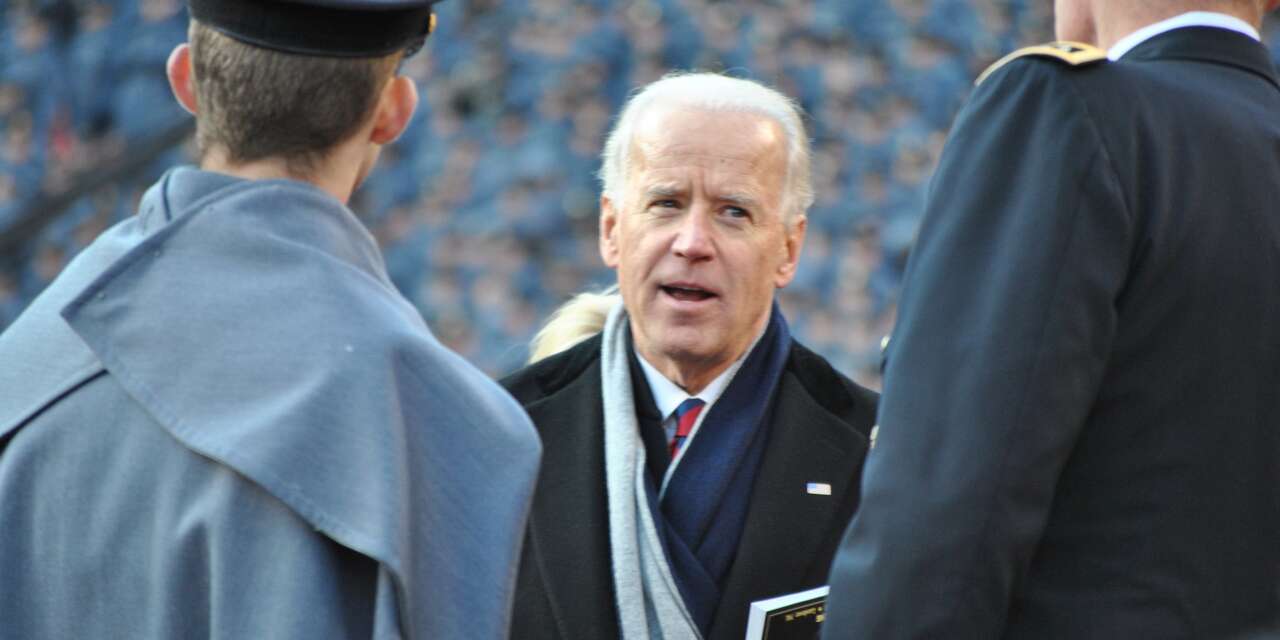by Walden Bello
originally posted on Foreign Policy in Focus
Next September, when the last C-130 cargo aircraft and Chinook transport helicopters take off from the infamous Bagram Air Force Base in Afghanistan that has doubled as a CIA torture center for suspected jihadists, they will not only be leaving behind the site of a military defeat. Their departure will also mark the dismal end of a strategy of direct military engagement to drastically reshape the Middle East that resulted instead in upending the global strategic balance.
America’s 20-year-long war in the Middle East contributed decisively not only to degrading U.S. imperial power but also to the domestic polarization savaging the American political process at present and to the emergence of China as the new center of global capital accumulation. Ending the Afghanistan commitment, liberals and progressives hope, will provide the conditions for a fundamental reset of US foreign policy
But even now, many are skeptical that the United States has really learned its lesson and that Joe Biden will not find another excuse to maintain a military contingent in Afghanistan.
In a United States that has gone through the trauma of COVID-19, followed by the January 6 insurrection and a pandemic of almost weekly mass shootings, Osama bin Laden, George W. Bush, 9/11, and the War on Terror might seem to be historical footnotes that pale before the country’s present troubles. But these now seemingly distant personalities and events had a decisive role in shaping the present.
Osama’s Vision, Bush’s Opportunity
As I wrote in the aftermath of 9/11, Osama bin Laden operated with something like Che Guevara’s “foco theory.” Guevara believed that direct engagement of the enemy was necessary to show peasants that guerrillas could defeat the military and encourage them to join the revolution. Bin Laden, operating on a global stage, saw the September 11 events as an act that would expose the vulnerability of the Great Satan and inspire Muslims to join his jihad against it.
It did not quite work out that way. Instead of being inspired, most Muslims were horrified and distanced themselves from the terrible deed. Still bin Laden lucked out, thanks to George W. Bush and the neoconservatives that had come to power with him in Washington in 2001. For them, Osama’s attack was a god-given opportunity to teach both America’s enemies and friends that the empire was omnipotent. Ostensibly waged to go after the “roots of terror,” the invasions of Afghanistan and Iraq were in fact what the Romans called “exemplary wars,” and their aim was to reshape the global strategic environment to fit Washington’s so-called “unipolar” status following the demise of the Soviet Union.
Disappointed with his father’s reluctance to finish off Saddam Hussein during the 1990-91 Gulf War, George W. Bush initiated these invasions as the first steps in a demarche that would eliminate the so-called rogue states, compel greater loyalty from dependent states or supplant them with stronger allies, and put strategic competitors like China on notice that they should not even think of vying with the United States.
Disregarding the lessons of Vietnam and the British and Soviet debacles in Afghanistan, the Bush administration drove the United States into two unwinnable wars against highly motivated insurgents in the Middle East as bin Laden watched with satisfaction, living unperturbed under the protection of an American ally, the Pakistani military, in the peaceful garrison town of Abbottabad in Pakistan. It was not exactly the scenario he had envisaged, but he was not about to quibble if the Bush administration, owing to its drive for unipolar hegemony, placed the United States on the road to overextension, which was, after all, his strategic aim.
Prolonged occupation demanded boots on the ground, and as Deputy Secretary of State Richard Armitage saw it, “The Army, in particular, [is] stretched too thin…fighting three wars—Afghanistan still, Iraq, and the global war on terrorism.” At the height of the Iraq War, defense analyst James Fallows wrote, it was “only a slight exaggeration to say that today the entire U.S. military is either in Iraq, returning from Iraq, or getting ready to go.” Most of the Army’s maneuverable brigades were overseas, and those left in the United States were too few to maintain the contingency reserve or the training base necessary. Even the famed Special Forces were degraded, with their actual numbers in the field coming to hundreds at the most. Lack of human resources led the high command to call on the Reserves and the National Guard. As might be expected, morale plummeted, especially as tours of duty were extended and casualties mounted in lands to which these part-time soldiers had never expected to be assigned.
And as the prospect of prevailing in the battlefield became more and more distant, public support for the Iraq and Afghanistan expeditions, which was very limited right from the start, went up in smoke.
Obama Extends Bush II’s Wars
Barack Obama came to power in 2009 promising an end to the Middle East wars. In Iraq, the bulk of U.S. forces were withdrawn during his first term, but thousands of marines and Special Forces personnel were reintroduced to fight against the Islamic State whose growth had been provoked by the U.S. presence in the Middle East. Even as this was happening, what had been a key U.S. objective in Iraq—a stable non-sectarian pro-U.S. state–collapsed as the Iraqi Shiite government aligned itself with Iran, against whom the United States was colluding with the Israelis in a high-tech effort to sabotage Tehran’s nuclear program.
Obama also began an open-ended intervention in the Syrian Civil War, deploying Special Forces and airstrikes that eventually enmeshed the United States in a multi-cornered confrontation with the Islamic State and other jihadists, Syrian forces, and Russian troops. The Democratic president, ironically a recipient of the Nobel Peace Prize, in fact expanded the U.S. military reach to North Africa during the Arab Spring in 2011, unilaterally enforcing with its NATO allies a “no fly zone” featuring attacks on Libyan defenses that resulted in hundreds of civilian deaths and massive air support of the ground campaigns of anti-Qaddafi rebels. The intervention left Libya with no centralized government, and the country lapsed into an anarchy that persists until the present.
In Afghanistan, Obama added 33,000 troops to the 68,000 already in the country when he came to office, thinking this “surge” would cripple the Taliban. This surge failed, but he maintained 8,400 troops in the country. In fact, Obama expanded the war to Pakistan, using drones to target Taliban leaders and jihadists operating from bases near the border with Afghanistan; this computer-managed war took the lives of hundreds of innocent civilians that the military termed “collateral damage.” He also sent Special Forces on raids deep into Pakistan, the most prominent example being the one to Abbotabad that killed Osama bin Laden in 2011.
In contrast to Bush II, who preferred “boots on the ground,” Obama, as the New York Times’ David Sanger, put it, embraced “hard, covert power, “alluding to the necessity of a “‘light footprint’ that enables [the United States] to fight its wars stealthily, execute its operations with the speed of the bin Laden raid, and then avoid lengthy entanglements.” Like Bush II, who had never experienced war firsthand, Obama brought to his brand of war-making an “aggressiveness” that people around him found “surprising.”
Obama, though, did appreciate the fact that being bogged down in the Middle East was sapping U.S. power by provoking disaffection at home and alienation from America abroad. Fighting so-called “asymmetric warfare” with irregulars like the Taliban and the jihadists could go on forever, and Obama wanted to shift the global U.S. military strategy to one that was more congenial to its perceived strength in conventional warfare instead of counterinsurgency. The grand new design was the “Pivot to Asia” that involved the deployment of the bulk of the U.S. naval strength to the Indo-Pacific area to contain China. Reorientation was easier said than done, however, as extrication from the Middle East morass was made impossible by the strength of interests that made up the War on Terror/Counterinsurgency lobby.
Obama’s Wars Become Trump’s
Donald Trump rode to power partly on the strength of anti-war sentiment, continually reminding people during his campaign for the presidency in 2015 and 2016 that his rival Hillary Clinton had voted for the invasion of Iraq in 2003 when she was a senator. In office, however, he ended up destabilizing the Middle East even more. There was, first of all, his unqualified support for Israel, which led him to a major move that infuriated Arabs: the transfer of the U.S. embassy from Tel Aviv to Jerusalem. Then he reversed the one tension-lessening achievement of Obama when he took the United States out of the Iran nuclear deal that had put effective checks on Tehran’s development of weapons-grade uranium in return for a relaxation of economic sanctions. Finally, he gave a blank check for weapons purchases to Saudi Arabia, enabling the benighted kingdom to wage its cruel intervention in the civil war in Yemen.
Trump occasionally remembered, however, that eliminating boots on the ground was one of his major campaign promises, so that the country could focus on “America First.” But, as in the case of Bush II and Obama, both of whom had an inferiority complex when dealing with generals owing to their lack of combat experience, draft dodger Trump also deferred to the military. After he decided to end the Obama-era intervention in Syria by withdrawing 1,000 U.S. troops in early October 2019, he caved in to the military’s pushback. Over a month later, the head of the U.S. Central Command stated there was no “end date” on Washington’s intervention in Syria and the presence of 2,500 American troops in neighboring Iraq.
Like Obama, Trump was passive-aggressive, eager to show the generals that he could be as macho as they are. The most notorious display of this behavior was when he flagrantly disregarded international law and ordered the assassination of Qassem Soleimani, a top Iranian general, at Baghdad International Airport in January 2020, against the advice of the top brass and the intelligence elite.
Faced with passive resistance on the part of the generals, Trump ended up keeping thousands of troops in Afghanistan during his term in office, but, mindful of the consequences of not keeping his promise by the 2020 elections, he directed the military in February 2020 to withdraw all troops by November 2020. Again, the military procrastinated, with the support of the War on Terror lobby, the deadline passed, and Joe Biden inherited some 3,500 troops and Special Forces personnel still in the country when he took office in January 2021.
Will Trump’s Wars Becomes Biden’s Wars?
Biden’s early rhetoric was reminiscent of both Obama’s and Trump’s initial seeming decisiveness about ending American’s Middle East engagements. Obama’s “Pivot to Asia” has been resurrected, identifying China more explicitly as a U.S. strategic rival. As the Defense Department puts it, China is the “DOD’s No. 1 pacing challenge, and it will develop operational concepts, capabilities and plans to bolster deterrence and maintain its competitive advantage. The approach toward China will be coordinated and synchronized across the enterprise to advance DOD’s priorities—integrated into domestic and foreign policy—in a whole-of-government strategy, strengthened by DOD’s alliances and partnerships and supported on a bipartisan basis in Congress.“
But that a continuing commitment to the Middle East is built into the Pentagon’s perspective is seen in the fact that after listing containment of China as its prime concern, it then lists as a priority the “disruption of transnational and non-state actor threats from violent extremist organizations—such as those operating in the Middle East, Africa and South and Central Asia.”
Indeed, that difficulty of ending these debilitating commitments was shown by the fact that Biden’s first act of war took place—guess where?—in Syria, where U.S. planes attacked Syrian militias slightly over a month after the new administration took office, on February 25.
Who Lost Afghanistan?
If a sideshow like Syria is so difficult to wind up, it will be that much more difficult to end a major commitment like Afghanistan. As Biden’s self-imposed September deadline approaches, the War on Terror military/civilian lobby is going into overdrive to keep a U.S. presence there. The congressionally chartered Afghan Study Group, co-chaired by retired Gen. Joseph F. Dunford Jr., a former chairman of the Joint Chiefs of Staff, has warned that “a precipitous withdrawal could lead to a reconstitution of the terrorist threat to the U.S. homeland within eighteen months to three years.” Biden’s people must be anticipating with dread the blood curdling cry of “Who Lost Afghanistan?” that the opportunistic far right would raise in advance of the 2022 mid-term elections.
One characteristic of overextension is that it is infernally difficult to shed old priorities so that everything becomes a priority. Few have been the empires that have been able to unclench their fists and let go of self-destructive commitments. This is the reason why, despite Biden’s rhetoric of withdrawal, one cannot fault skeptics who predict that Biden, never known as a steely fellow but well known as a compromiser, will ultimately not have the stomach to defy the entrenched interests that are hell-bent on keeping a heavy American footprint in Afghanistan and the Middle East.










